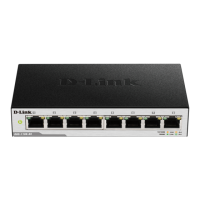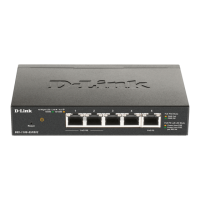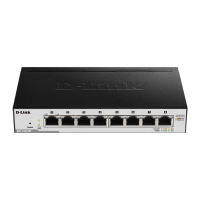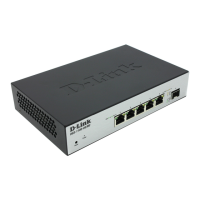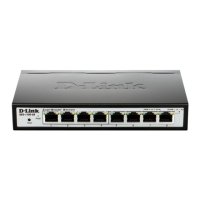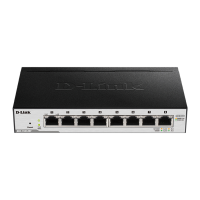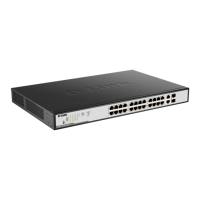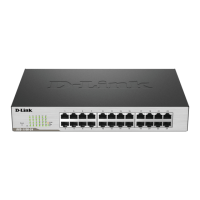4 Configuration D-Link Smart Managed Switch User Manual
30
Table 4.20
Below is a list of the pre-defined voice OUI’s. These cannot be used as a user defined OUI.
OUI Vendor Mnemonic Name
00:E0:BB 3COM 3com
00:03:6B Cisco cisco
00:E0:75 Veritel veritel
00:D0:1E Pingtel pingtel
00:01:E3 Siemens siemens
00:60:B9 NEC / Philips nec&Philips
00:0F:E2 Huawei-3COM Huawei&3com
00:09:6E Avaya avaya
Table 4.21
Click Apply to make the configurations take effect.
Click Add to create a new Voice VLAN.
L2 Features > Spanning Tree > STP Global Settings
The Switch implements two versions of the Spanning Tree Protocol: Rapid Spanning Tree Protocol (RSTP)
as defined by IEEE 802.1w, a version compatible with the IEEE 802.1D STP. RSTP can operate with legacy
equipment implementing IEEE 802.1D, however the advantages of using RSTP will be lost.
By default, Rapid Spanning Tree is disabled. If enabled, the Switch will listen for Bridge Protocol Data Unit
(BPDU) packets and their accompanying Hello Packets. The BPDU packets are sent even if a BPDU packet
is not received. Therefore, each connection between bridges is sensitive to the status of the link. Ultimately
this difference results in faster detection of failed links, and therefore faster topology adjustment.
Figure 4.38 – L2 Features > Spanning Tree > STP Global Settings
The fields that can be configured are described below:
Item Description
Spanning Tree State
Spanning Tree State Select to enable or disable the Spanning Tree Protocol.
Spanning Tree Mode
Spanning Tree Mode
Select the STP mode. The options to choose from are RSTP
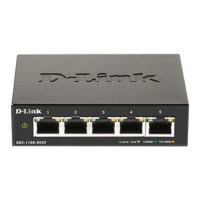
